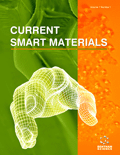Abstract
Energy production is a demanded process in today’s world. Some processes
might generate pollutants and other undesirable particulates and toxic chemicals. One
such eco-friendly and efficient method for generating electricity and energy can be
through fuel cells with the utilization of microbes (bacteria). Such a method can be
termed Microbial Fuel Cells (MFCs). It is a bio-electrochemical system. It uses
bacteria and their biochemical processes for generating an electric current, along with
oxygen which is a high-energy oxidant. MFCs imitate the bacterial interactions that are
found in the nature. Being a cell, it requires electrodes, substrates, and electrolytic
solutions. To improve the efficiency of the MFC, we need to separate the anode and
cathode into two compartments and the respective reactions taking place. Membranes
play a crucial role in achieving it. A membrane not only divides the anode from the
cathode but also prevents the entry of oxygen into the anode chamber. The most
important function of a membrane is to allow the selective transfer of ions across the
two electrode chambers. Membranes can be diaphragms or separators. Porous
membranes are commercially used ones usually made of different effective polymer
materials. Other important membranes can be semi-permeable and ion-exchange
membranes. This chapter mainly reviews the various membranes and the materials
used in their structures that have the potential to increase the MFC performance. It also
focuses on the different transport processes across the membranes, along with a brief of
advances in this technology and future scope.






















